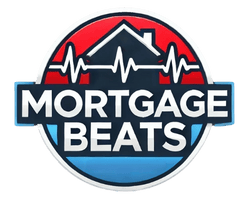The Fundamental Differences Between Loan Types
When financing a home, the property’s intended use plays a significant role in determining your mortgage terms. Primary residence loans typically offer the most favorable rates and terms because lenders consider them lower risk. These properties serve as the borrower’s main home, which statistically leads to more reliable repayment behavior. Lenders assume homeowners will prioritize keeping a roof over their family’s head above other financial obligations.
Investment property loans come with higher interest rates and stricter requirements because they represent greater risk to lenders. Unlike primary residences where owners live full-time, investment properties are business ventures that borrowers might walk away from during economic downturns. This risk premium translates to interest rates that are typically 0.5% to 0.75% higher than primary residence loans. The difference might seem small initially, but over a 30-year mortgage, it adds up to tens of thousands in additional interest payments.
At NorCal Real Estate & Financial Service, we help clients understand these critical distinctions before they commit to a purchase. Our mortgage experts explain how loan classification affects both short-term payments and long-term investment returns. We believe informed borrowers make better decisions, which is why we take time to clarify these fundamental differences for every client.
Why Lenders Charge More for Investment Properties
Financial institutions price risk into every loan they originate, and investment properties inherently carry more uncertainty than primary residences. Historical data shows default rates on investment properties run significantly higher, especially during economic contractions when rental income may decline. Lenders also recognize that borrowers facing financial hardship will likely prioritize their primary home payment over an investment property mortgage.
The operational aspects of investment properties create additional challenges for lenders. Rental properties experience more frequent tenant turnover, maintenance issues, and potential periods of vacancy – all factors that could impact the owner’s ability to make timely payments. These variables lead to more conservative underwriting standards and higher interest rates to offset the increased risk of default.
We work closely with lenders to help our investment property clients present the strongest possible loan applications. Our team knows what documentation lenders want to see for investment properties, from solid rental agreements to cash reserve requirements. By properly structuring your application from the beginning, we can often help secure more favorable terms than borrowers might obtain on their own.
Current Rate Comparisons: By the Numbers
As of mid-2025, the spread between primary residence and investment property rates remains significant. For borrowers with excellent credit (740+ FICO scores), primary residence rates might average around 6.5% for a 30-year fixed mortgage. Comparable investment property loans typically start around 7.25% for the same term. This 0.75% difference translates to nearly $150 more per month on a $400,000 loan, or about $54,000 in additional interest over the loan’s life.
The rate gap widens further for riskier loan scenarios. Borrowers with lower credit scores or higher debt-to-income ratios might see spreads exceeding 1% between property types. Adjustable-rate mortgages (ARMs) show similar patterns, with investment property ARMs starting about 0.5% higher than their primary residence counterparts. These differences hold true across most conventional loan products from major lenders.
Our mortgage professionals stay current on daily rate fluctuations across all loan types. We monitor multiple lenders to identify which institutions are offering the most competitive investment property rates at any given time. This market knowledge allows us to match clients with loan products that minimize their interest rate premium compared to primary residence financing.
Down Payment Requirements for Each Loan Type
Down payment standards represent another significant difference between primary residence and investment property loans. Most conventional primary residence mortgages require just 3-5% down for qualified buyers, with FHA loans allowing as little as 3.5% down. These low down payment options help make homeownership accessible to first-time buyers and those with limited savings.
Investment property loans demand much larger down payments, typically starting at 20-25% of the purchase price. Some lenders require 30% or more for certain types of rental properties or borrowers with weaker financial profiles. These higher requirements protect lenders by ensuring the borrower has substantial equity in the property from day one, reducing the risk of strategic default during market downturns.
We help investment property buyers explore creative solutions to meet these higher down payment requirements. From gift funds to secured lending products, our advisors know all the legitimate strategies for assembling the necessary cash. We also counsel clients on how different down payment amounts affect their interest rates and overall loan costs, helping them make optimal financing decisions.
How Credit Scores Affect Both Loan Types
Credit score requirements follow the same pattern of stricter standards for investment properties. While some primary residence loan programs accept FICO scores as low as 580, investment property loans typically require minimum scores of 680-700. The best investment property rates generally go to borrowers with scores above 740, with each 20-point drop below that threshold potentially adding 0.125% to 0.25% to the interest rate.
Lenders scrutinize credit history more carefully for investment property loans as well. They may discount scores that recently improved after past delinquencies, preferring to see several years of clean payment history. Credit utilization ratios also receive extra attention, with lenders wanting to see available credit that isn’t maxed out across multiple accounts.
Our credit specialists help clients understand exactly where they stand before applying for either type of mortgage. We review credit reports in detail, identifying any issues that could affect loan approval or pricing. For clients who need to improve their scores, we provide tailored advice on how to boost their credit profile most efficiently before applying for financing.
Debt-to-Income Ratio Considerations
Debt-to-income (DTI) ratios play a crucial role in mortgage approvals for both property types, but lenders apply different standards. Primary residence loans often allow DTIs up to 45-50% for well-qualified borrowers. Some government-backed programs may stretch even higher in certain cases. These more flexible standards recognize that homeowners will prioritize their housing payment above other obligations.
Investment property DTI requirements are much stricter, typically capping at 40-43% for most conventional loans. Lenders want assurance that borrowers can comfortably handle both their personal debts and the new investment property payment, even if temporary vacancies occur. They’ll carefully examine whether the rental income (usually counted at 75% of actual rents to account for vacancies and expenses) sufficiently offsets the new mortgage payment.
We help investment property buyers structure their finances to meet these stringent DTI requirements. Our advisors know all the tricks lenders use when calculating DTIs and can suggest strategies to improve your ratios. From paying down certain debts to restructuring income documentation, we’ve helped countless clients position themselves for approval when their initial numbers didn’t quite meet lender standards.
Private Mortgage Insurance Differences
Private Mortgage Insurance (PMI) requirements highlight another key difference between the two loan types. Primary residence buyers putting down less than 20% typically must pay PMI, which protects the lender in case of default. This insurance usually costs 0.5-1.5% of the loan amount annually until the borrower reaches 20% equity. Some government loans have their own mortgage insurance programs with different rate structures.
Investment properties don’t qualify for traditional PMI at all, which partially explains their higher down payment requirements. Without this risk mitigation tool, lenders require larger equity positions to approve investment property loans. Some portfolio lenders offer similar products for investment properties, but these come with even higher premiums than standard PMI and stricter qualification standards.
We educate our primary residence clients about PMI options, including lender-paid variations and strategies for eliminating it quickly. For investment property buyers, we explain alternative approaches like piggyback loans or cross-collateralization that might reduce cash requirements. Our comprehensive approach ensures clients understand all the insurance implications before selecting a loan program.
Loan Term Variations and Their Impact
Primary residence mortgages offer the widest variety of term options, from short-term ARMs to 40-year fixed products. Government-backed loans like FHA and VA provide particularly flexible terms, including streamline refinance options that aren’t available for investment properties. These varied terms help homeowners match their mortgage to their specific financial situation and homeownership timeline.
Investment property loans typically come with fewer term choices. Most conventional investment property mortgages max out at 30 years, with some lenders offering only 25 or 20-year terms. Adjustable-rate options usually have shorter fixed periods (5/1 or 7/1 ARMs rather than 10/1) before the rate begins adjusting annually. These limitations reflect lenders’ desire to reduce long-term risk exposure on investment properties.
We help investors analyze how different loan terms affect both cash flow and long-term returns. Our financial modeling tools show exactly how a shorter term with higher payments might create better overall returns compared to a longer-term loan. For primary residence buyers, we explain how term selection impacts both monthly budgets and total interest costs over time.
Tax Implications for Each Property Type
The tax treatment of primary residence and investment property mortgages differs significantly. Primary residence mortgage interest qualifies for deduction on loans up to $750,000, potentially reducing taxable income. Homeowners may also exclude up to $250,000 ($500,000 for married couples) of capital gains when selling their primary residence if they meet occupancy requirements.
Investment property mortgages offer different tax advantages. The full interest remains deductible without loan amount limitations, and owners can also depreciate the property (excluding land value) over 27.5 years. Expenses like maintenance, insurance, and property management fees become deductible business expenses. However, capital gains don’t qualify for the primary residence exclusion when selling.
Our advisors work closely with tax professionals to help clients maximize these benefits. We explain how loan structure affects tax outcomes, whether you’re buying a primary residence or rental property. For investor clients, we highlight strategies like cost segregation studies that might accelerate depreciation benefits in early ownership years.
How to Secure the Best Rates for Your Situation
Regardless of property type, securing the best available rates requires preparation and strategy. For primary residences, this means optimizing your credit profile, saving for an adequate down payment, and choosing the right loan term for your situation. First-time homebuyer programs and local housing initiatives can sometimes provide additional rate discounts or assistance with closing costs.
Investment property borrowers need to approach rate shopping differently. Building relationships with portfolio lenders who specialize in investment properties often yields better terms than going through standard retail channels. Demonstrating prior landlord experience or taking educational courses can sometimes qualify borrowers for preferred pricing with certain lenders.
This is where our expertise delivers exceptional value. We maintain relationships with dozens of lenders offering both primary residence and investment property loans. Our team knows which lenders are most competitive for different scenarios and can quickly identify your best options. We also help structure your application to present your financial picture in the most favorable light possible to underwriters.
Conclusion
The choice between purchasing a primary residence or investment property involves careful consideration of financing costs. While investment properties typically carry higher interest rates and stricter requirements, they also offer unique tax benefits and income potential. Primary residence loans provide more favorable terms but lack the business advantages of rental properties.
At NorCal Real Estate & Financial Service, we help clients navigate these complex decisions every day. Our mortgage experts provide clear comparisons of loan options so you can make informed choices about your real estate investments. We take pride in finding creative solutions that meet our clients’ needs while minimizing financing costs.
Whether you’re buying your first home or expanding your real estate portfolio, we invite you to contact our team. With access to competitive loan programs for both primary residences and investment properties, we can help you secure financing that aligns with your financial goals. Let us put our expertise to work helping you make the most of your real estate opportunities.
Ready To Get The Best Financial Advise, Email us at: Chris@mortgagebeats.com



